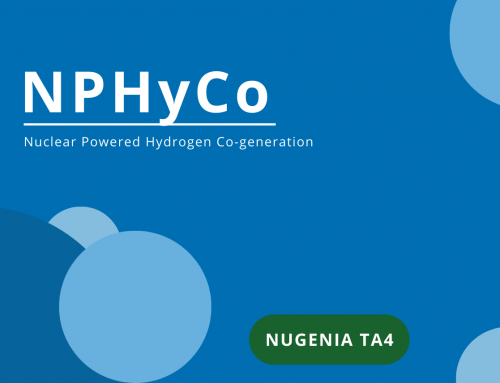
OBJECTIVES
The key objective of SASPAM-SA is to investigate the applicability and transfer of the operating large-LWR reactor knowledge and know-how to the near-term deployment of integral PWR (iPWR), in the view of Severe Accident (SA) and Emergency Planning Zone (EPZ) European licensing analyses needs. This includes also dedicated actions on Accident Tolerant Fuels (ATF) as well as on In-Vessel Melt Retention (IVMR). The proposed project outcomes should be supportive for the iPWR licensing process by bringing up key elements of the safety demonstration needed. This will speed up the licensing and siting process of iPWRs in Europe. To do that, four main elements, not addressed in other on-going SMR oriented initiatives, will be investigated:
- Identification of plausible SA scenarios for iPWR designs;
- Identification of the conditions in the vessel and in the containment that characterize iPWR designs, in hypothetical postulated SA scenarios, and differ significantly from those in large-LWRs;
- Study the applicability of the existing experimental database to iPWR and identify new experimental needs;
- Assess the capability of internationally recognized European and Non-European computational tools (largely used in Europe) to describe the behaviour of the most promising iPWR designs during postulated SA scenarios and to predict the resulting radiological impact on- and off-site.

EXPECTED IMPACTS
- Identification of plausible SA scenarios for iPWR to be used for further analyses in the envisaged European licensing processes (e.g. by TSO, Regulators) or for the design of the European iPWRs (e.g. from industries);
- Assessment of the available experimental database to iPWR and identification of experimental needs;
- Build expertise of code users for SA in iPWR and training of new code users (e.g. youngest generations);
- Applicability of the built knowledge on ATF for iPWR and large-LWR;
- Applicability of assessed code guidelines and best practices for the simulation of iPWR;
- Applicability of the assessed state-of-art methodologies to carry out iPWR SA deterministic safety analysis;
- Build the know-how for the demonstration of the ultimate confinement function of the iPWR containment in postulated SA conditions along an independent safety review process;
- Develop SAMG to prevent accidents or mitigate their consequences avoiding radiological releases;
- Applicability of tools and methods for EPZ iPWR analysis.

HIGHLIGHTS
- The applicability of large-LWR reactor knowledge & know-how to the near-term deployment iPWR, in view of SA and EPZ analyses, will be assessed and consolidated. The research priorities will be identified in terms of methodology, code development and experimental databases;
- The knowledge gained in the frame of SASPAM-SA can support Regulators in decision-making as well as Industry and TSOs in assessing the applicability of iPWR safety features;
- Implement communication activities towards international organizations and networks;
- Implement an education and training program, and a mobility exchange program for young researchers;
- Participation to international conferences, workshops, and meetings to disseminate the project results;
- Set-up Advisory Board (AB) and End-User Group (EUG)

PARTNERS
ENEA, CIEMAT, CNRS, EDF, FZJ, GRS, INRNE, IRSN, KIT, KTH, LEI, POLIMI, RATEN, RUB, SINTEC, SSTC-NRS, SURO, TRACTEBEL, TUS, UNIROMA1, VTT, PSI, JRC.

DURATION & BUDGET
[10/2022 ] – [9/ 2026 ] – 4 years
Overall Budget: € 4 276 038.85
EU Contribution: € 2 991 694.00

CONTACT
Technical Project Leader:
Fulvio Mascari (ENEA) Email: fulvio.mascari@enea.it

EVENTS
- Two open international workshops and at least two trainings;
- Contribution for a reference European summer school that might be organized on SA field (e.g. SNETP SAP)

FOR DOWNLOAD

Funded by the European Union. Views and opinions expressed are however those of the author(s) only and do not necessarily reflect those of the European Union or European Commission-Euratom. Neither the European Union nor the granting authority can be held responsible for them.




